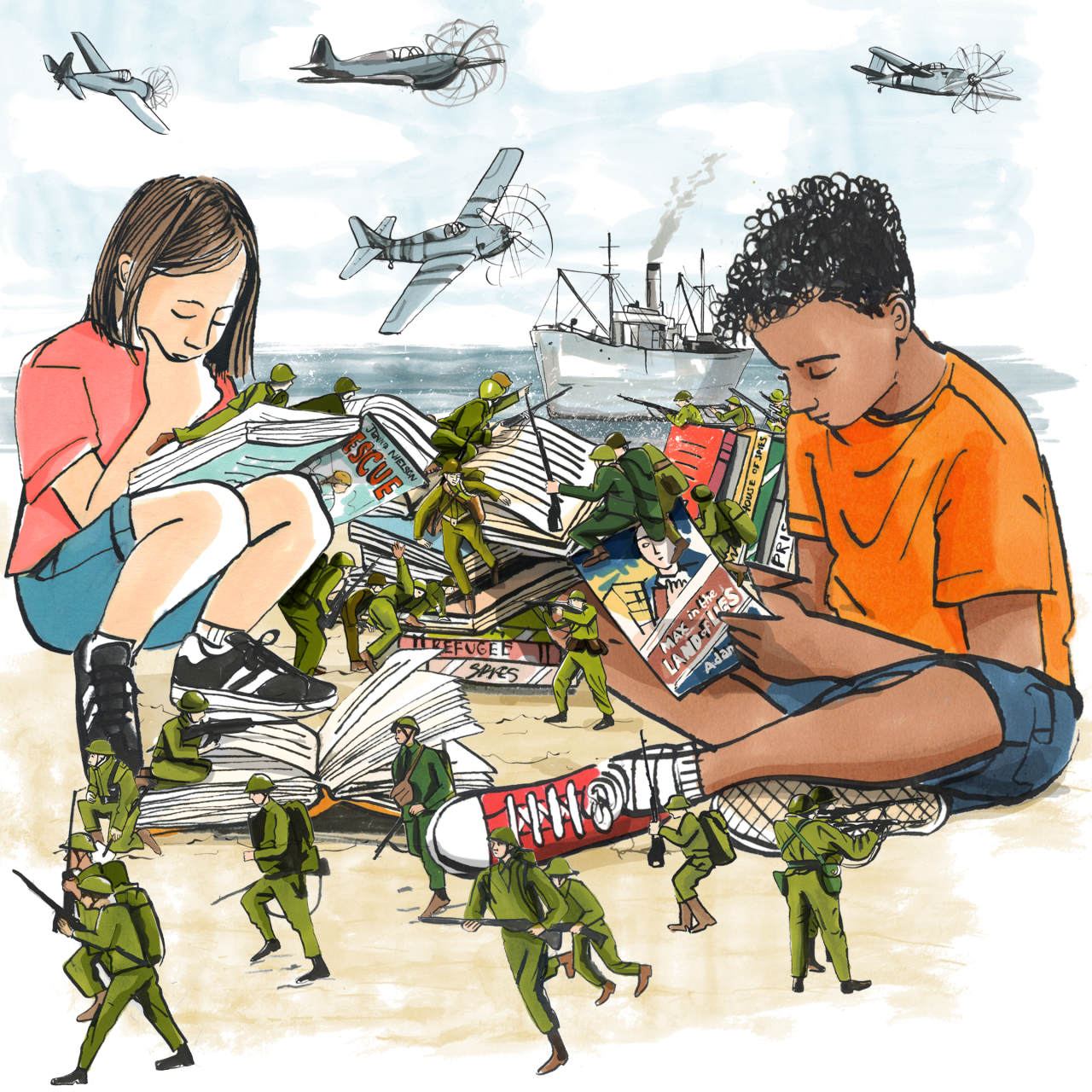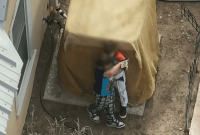
A crowd of excited children in Washington, Oklahoma, sat right at the edges of their seats a couple of weeks back as author Jennifer A. Nielsen shared the story of Lidia Durr Zakrzewski, a teen who became part of the Polish resistance during World War II. This remarkable young woman inspired the protagonist in Nielsen’s upcoming 2024 book “Uprising.”
For the middle-grade crowd, Nielsen has reached a status similar to that of a rock star, and she enjoys considerable acclaim within the publishing industry as well. Her frequent focus on historical fiction involving bombings, espionage, and youthful resisters during World War II has made her works incredibly popular among younger audiences, typically beginning at around age 8.
Scholastic, a prominent publisher of children’s literature in the nation, is seeking additional works centered around World War II, despite the overall sluggishness observed in the young readers’ fiction sector. During their book events, the company notices elementary and middle school students flocking towards shelves filled with WWII-themed novels, quickly grabbing copies until stocks deplete. Works authored by individuals such as Nielsen and Alan Gratz have achieved notable success, reaching bestseller status.
Featuring stories of courage and espionage, along with vivid battle scenes and displays of valor, Gratz and several fellow authors have explored numerous themes that attract children to series like “Harry Potter” and “Percy Jackson.” Rather than focusing on mythical creatures such as dragons or supernatural beings like wizards and gods, their narratives center around Nazis and youthful members of the resistance.
In Nielsen’s suspenseful book “Rescue,” 12-year-old Meg Kenyon finds herself involved in a perilous operation across Nazi-controlled France. Similarly, Adam Gidwitz’s latest work titled “Max in the Land of Lies” features 13-year-old Max Bretzfeld who goes back to Nazi-era Germany undercover for Britain. Additionally, Alan Gratz’s narrative “Heroes” follows the experiences of two companions during the bombing at Pearl Harbor carried out by Japan.
“There is unquenchable curiosity,” stated Aimee Friedman, who serves as an editorial director at Scholastic and edits some of the genre’s leading works by authors like Gratz. She mentioned that during their school fairs, publishers seek out trending new titles and categories; they soon realized that children were eager for more content: ‘Books about World War II rank number one,’ she explained.
There isn’t a dedicated classification for sales data specifically covering children’s books on World War II in general. However, sales figures show that printed books aimed at younger audiences focusing on the Holocaust—a significant aspect of World War II—increased by 13%, totaling approximately 350,000 units sold last year, based on data from market research firm Circana BookScan. In contrast, sales of children’s fiction experienced an overall decline of 1% over this period.
keep having difficulty with reading
following the closure of schools due to the pandemic.
In 2013, Gratz released “Prisoner B-3087,” which tells the tale of a young boy enduring multiple concentration camps and draws directly from the real-life experiences of Holocaust survivor Jack Gruener. Shortly after publication, Gratz discovered he had struck a chord with readers as he received an unprecedented amount of fan mail—more so than his preceding ten books combined. He shared this observation.
He later composed “Grenade,” which tells the story of an Okinawan boy during the American invasion of his homeland, and “Allies,” based on actual occurrences at D-Day. The book “Resist” serves as a companion to “Allies.” It has made it onto the New York Times bestseller list for children’s middle-grade hardcovers as of May 18.
In the realm of non-fiction, “The Diary of a Young Girl” by Anne Frank continues to be a staple reading assignment in educational settings across many years. In earlier works of fiction, we find Lois Lowry’s 1989 book “Number the Stars,” which delves into the story of the Danish resistance. Additionally, Markus Zusak’s 2006 narrative “The Book Thief” tells the tale of a young girl living under the rule of Nazi Germany.
who steals books
to prevent them from getting burnt.
“The struggles of World War II continue to serve as a mirror reflecting the essence of the human experience,” stated Julie Strauss-Gabel, who serves as both the president and publisher at Dutton Children’s Books and Gidwitz’s editor.
Nielsen, who is 53 years old, travels to numerous schools across the country annually from her residence in Utah. She particularly enjoys interacting with audiences of children who doubt that tales from over eight decades ago could still captivate them.
They find it hard to believe that this actually occurred involving someone around their age,” she stated. “These tales epitomize the eternal struggle between good and evil.” Nielsen, who has authored bestselling novels such as “Resistance” and “Uprising,” further commented, “It leaves no room for neutrality.
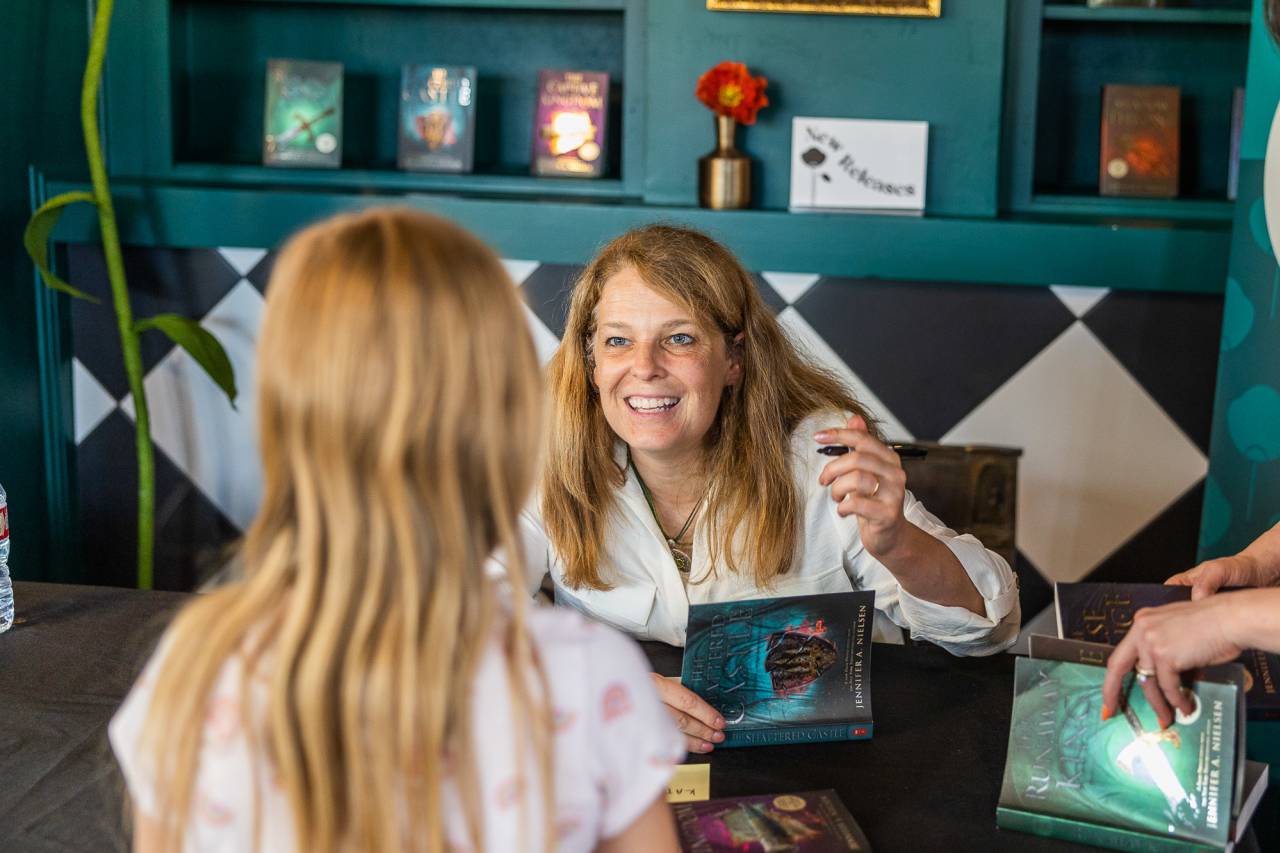
Laura Cheek, a librarian from Washington, Oklahoma, who brought Nielsen to speak in April, mentioned that engaging children with reading has been difficult; however, she believes Nielsen has discovered an effective approach.
“Middle school boys who usually ignore everything were seated with wide eyes and gaping mouths,” she remarked. Nielsen presented her future book concepts on a whiteboard and urged those present to develop their own narratives.
“It was quite an amazing experience,” stated Stella Cheek, an 11-year-old sixth-grade student who attended the event. (It’s worth noting that the two individuals named Cheek are not related.)
When reflecting on World War II, I initially think about the Holocaust; however, this expanded my comprehension,” she noted. Earlier, Cheek discovered “Uprising” at her school library. “The book didn’t focus on a Jewish girl but rather depicted life for someone residing in occupied Poland during those times. This provided insight into how everyone in the region suffered due to the war, beyond just focusing on Jewish individuals.
Stella’s sibling Huxley, a 14-year-old eighth-grade student who likewise witnessed Nielsen’s speech, had prior knowledge of World War II-themed novels. In his previous year as a seventh-grader, he had delved into Gratz’s highly acclaimed book from 2017 titled “Refugee.” This narrative follows three children: a young Jew escaping the Nazi regime, a Cuban girl evading communism, and a Syrian boy running away from warfare in his homeland—all undertaking dangerous quests for security.
Huxley mentioned that the tales might be unsettling, yet he feels it’s crucial to understand them. “Hitler unquestionably caused immense harm,” he stated. “It’s vital for us to comprehend these events so we can ensure such atrocities do not recur.”
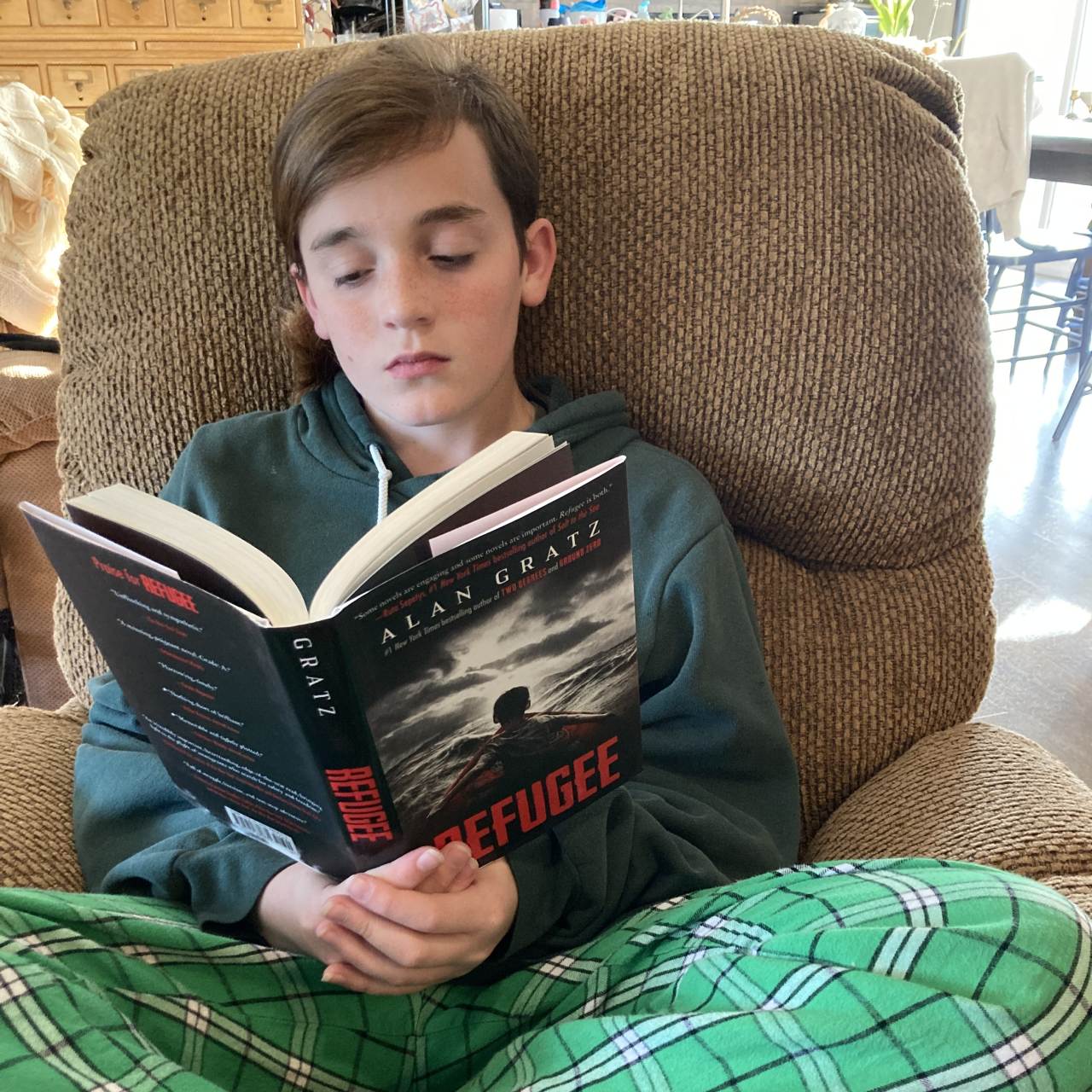
The hardcover version of “Refugee” remained on the New York Times’ children’s middle-grade bestseller list for over 280 weeks and currently has almost 1.6 million copies in print.
Parents often fret that the content might be too scary for their children, yet supporters of these books argue that they offer an engaging way to educate about historical events.
“I inform them that these books aren’t too dark for their children to read,” stated Valerie Koehler, who owns the Blue Willow Bookshop in Houston.
“For children, it often comes down to recommendations from their peers,” stated Sharon Hearn, who founded Children’s Book World in Los Angeles. Among the popular titles currently being discussed are “The Bletchley Riddle” from 2024, authored by Ruta Sepetys and Steve Sheinkin, which tells the story of two brothers entangled in the events of World War II.
A 12-year-old sixth-grader named Lariat Hale learned about Nielsen’s “Uprising” from a friend sometime last year.
She has subsequently read around four to five more of Nielsen’s historical works and participated in the author’s school event last month. “What I enjoyed was how some of her books are grounded in real events, and how she vividly breathes life into her characters through her writing,” Hale mentioned.
Gratz previously made regular appearances at schools. Nowadays, he conducts a monthly live online book discussion from his residence inPortland, Oregon, throughout the academic year.
He believes that young readers are attracted to his tales due to their appreciation of justice and their sensitivity towards the concept of advocating for righteousness.
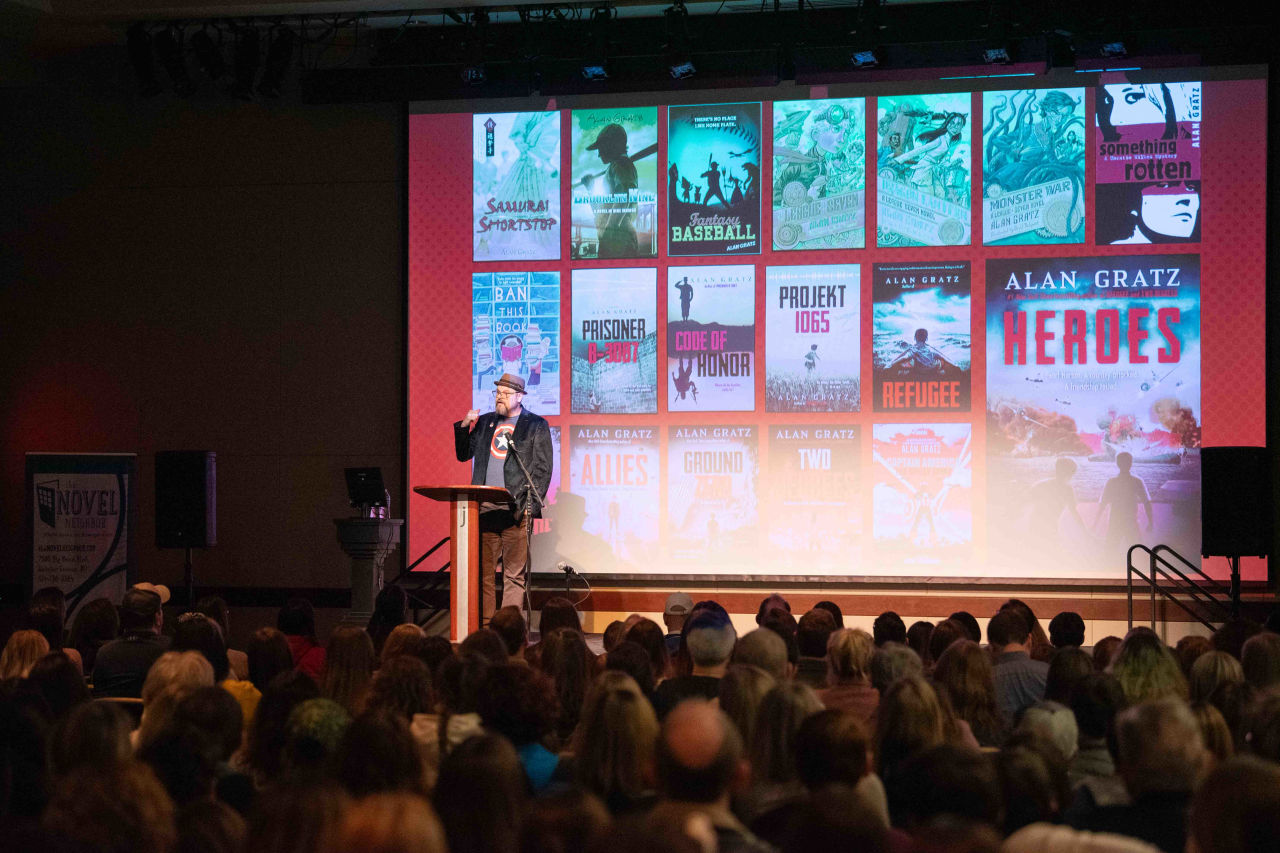
This was a conflict we had to engage in to halt the Nazis,” Gratz stated. “They were the world’s bullies. Middle-grade students grasp this concept.
The most recent event organized by Gratz attracted approximately 3,000 students hailing from 30 U.S. states and three Canadian provinces.
He started off by acknowledging that, in certain aspects, he had fallen short. Hailing from Knoxville, Tennessee, Gratz, at the age of 53, originated from a lineage deeply involved with football; however, rather than pursuing athletics, he chose the path of literature.
When he was in third grade, he mentioned that he created his very own newspaper, which he would place inside neighboring mailboxes. Just two years after that, he penned his inaugural book titled “Real Kids Don’t Eat Spinach,” an advisory volume covering food choices—such as pizza and French fries over spinach—and recommending certain movies like “Star Wars” and “Indiana Jones.” It also included style suggestions such as shorts and T-shirts. To date, Gratz has authored over twenty books.
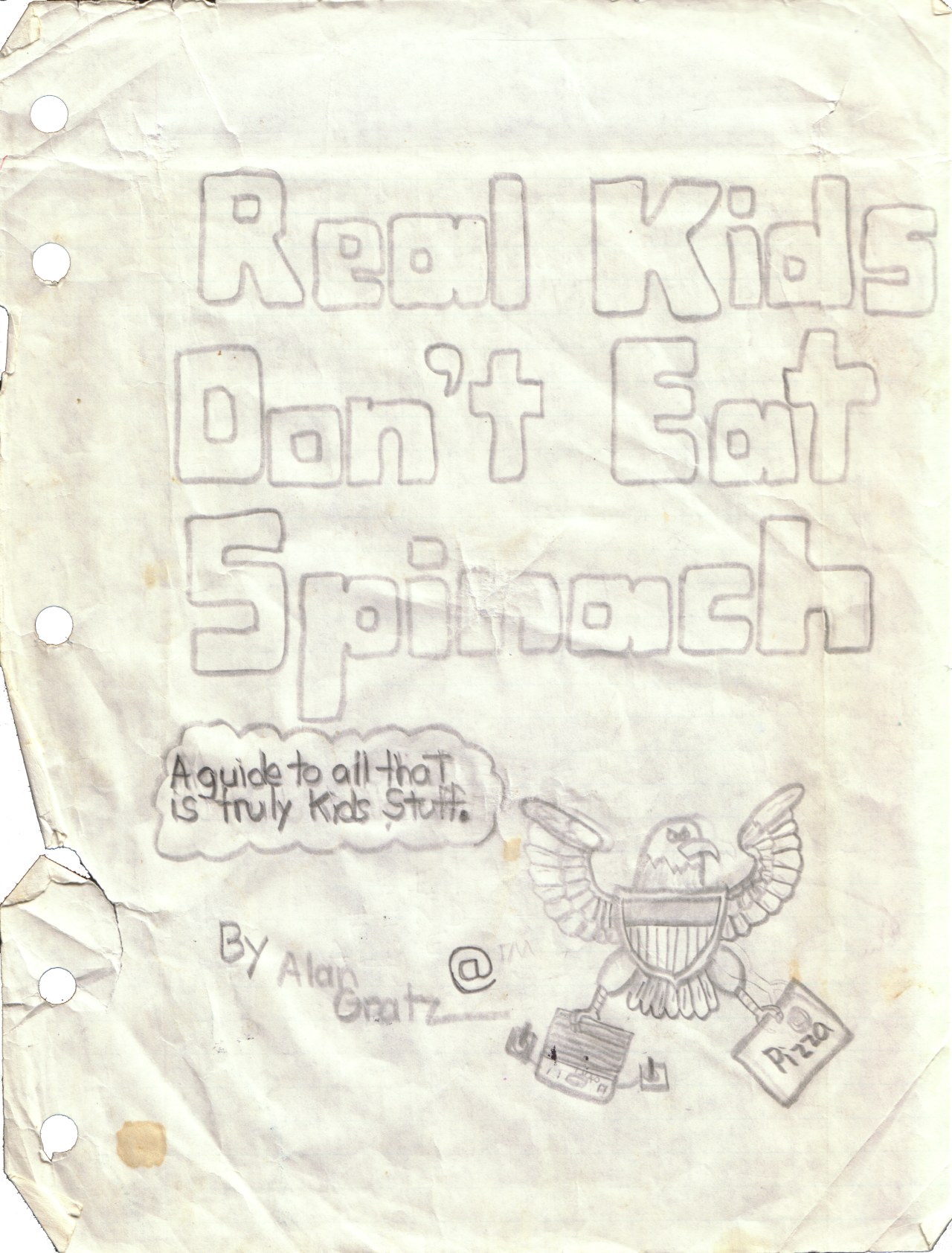
Scholastic is funding an extensive advertising and promotional push for Gratz’s upcoming book, “War Games,” set to release on October 7th. The narrative unfolds against the backdrop of the 1936 Berlin Olympics and follows a young female gymnast as she witnesses the rise of Nazi control in Germany, setting the stage for World War II.
The writer will embark on a 10-city tour featuring significant ticketed engagements—a privilege usually reserved for prominent celebrities. The publishing house has commissioned an inaugural print run of 200,000 copies, which is quite substantial for a book aimed at middle-grade readers.
The contemporary world bombards children through their smartphones, computers, and TVs, along with active shooter drills at school,” Gratz stated. “Some of them even have refugee peers as classmates. They can’t confine their thoughts solely to school, home, and the neighborhood. These books assist them in understanding the wider world.
Send your correspondence to Jeffrey A. Trachtenberg at
Jeffrey.Trachtenberg@wsj.com



